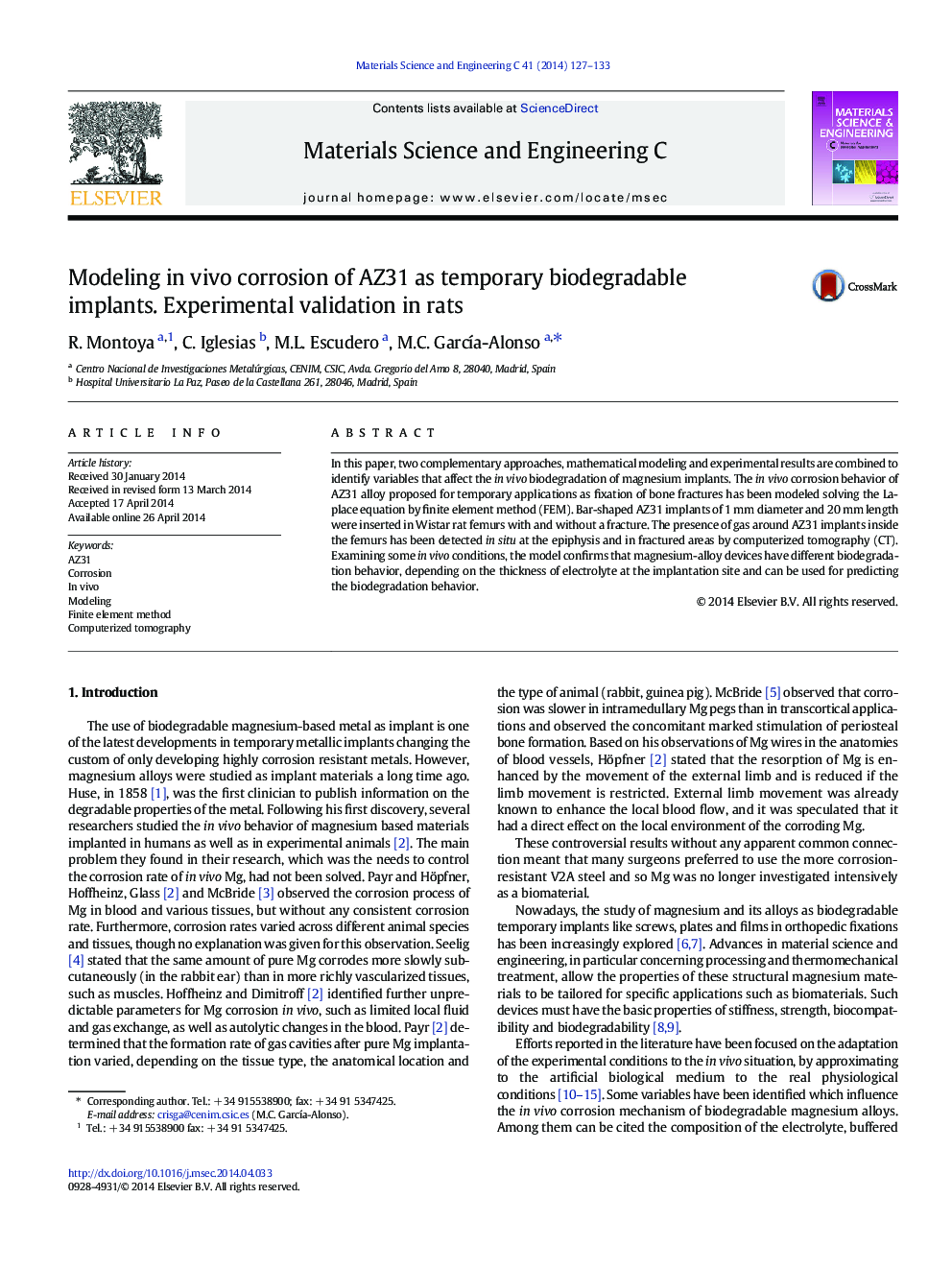| کد مقاله | کد نشریه | سال انتشار | مقاله انگلیسی | نسخه تمام متن |
|---|---|---|---|---|
| 1428723 | 1509180 | 2014 | 7 صفحه PDF | دانلود رایگان |

• Modeling of AZ31 corrosion by solving the Laplace by finite element method
• Electrolyte thickness is a key factor in the in vivo corrosion of magnesium alloys.
• A critical thickness below which corrosion is focused around impurities is identified.
• The critical value is less evident in a material with a high number of impurities.
• Experimental and numerical results explain the biodegradation of magnesium implants.
In this paper, two complementary approaches, mathematical modeling and experimental results are combined to identify variables that affect the in vivo biodegradation of magnesium implants. The in vivo corrosion behavior of AZ31 alloy proposed for temporary applications as fixation of bone fractures has been modeled solving the Laplace equation by finite element method (FEM). Bar-shaped AZ31 implants of 1 mm diameter and 20 mm length were inserted in Wistar rat femurs with and without a fracture. The presence of gas around AZ31 implants inside the femurs has been detected in situ at the epiphysis and in fractured areas by computerized tomography (CT). Examining some in vivo conditions, the model confirms that magnesium-alloy devices have different biodegradation behavior, depending on the thickness of electrolyte at the implantation site and can be used for predicting the biodegradation behavior.
Journal: Materials Science and Engineering: C - Volume 41, 1 August 2014, Pages 127–133